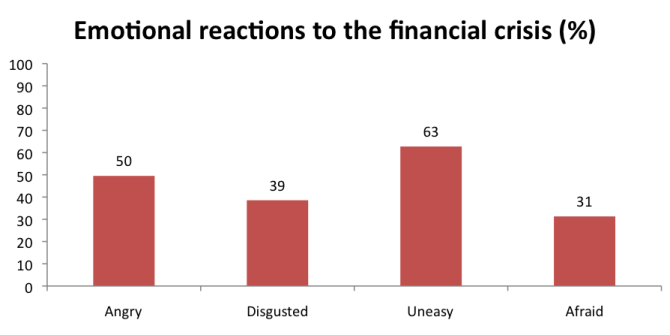 Where does accountability lie within the NHS? Bob Hudson writes that the current ways of the healthcare system make public scrutiny and citizen accountability opaque and increasingly incomprehensible to outsiders. He argues that engaging with citizens is key to giving the healthcare debate legitimacy.
Where does accountability lie within the NHS? Bob Hudson writes that the current ways of the healthcare system make public scrutiny and citizen accountability opaque and increasingly incomprehensible to outsiders. He argues that engaging with citizens is key to giving the healthcare debate legitimacy.
The issue of citizen accountability in the NHS has been troublesome from the outset. Aneurin Bevan’s preference for centralised control ushered in fifty years of citizen accountability channelled through Parliament and successive health ministers and secretaries of state. As long as patients and the public were satisfied with the way their health services were functioning, there may have been little interest in greater citizen involvement. But the combination of the global recession and the austerity programmes pursued by UK governments since 2010 has changed the situation.
Under intense financial pressure, the agency responsible for the day-to-day functioning of the NHS – NHS England – has required local areas to plan for radical reconfiguration of their services through Sustainability and Transformation Plans (STPs), in the hope of securing more cost-effective provision. The genesis of STPs lies in the seminal Five Year Forward View published in 2014 which set out a vision of how healthcare services needed to change to meet the needs of the population. Since the vision underpinning these models was around ‘systems’ rather than separate organisations spanning secondary, primary, and community care, there was also a need to develop some planning mechanism.
Although not even mentioned in the Forward View, STPs are intended to fill this planning gap. Guidance issued in 2016 indicated that STPs were destined to be the main vehicle for planning services across areas in England – 44 areas were identified as the geographical ‘footprints’ on which the plans would be based, and these had to be submitted to NHS England by October that year. This tight timescale took hold without any consideration of how these new entities were to be led, structured, and held accountable.
These changes are significant and many will find them attractive. They could provide the vehicle for planning that was lost to the system when strategic health authorities were abolished under the Health and Social Care Act 2012, and might serve as the catalyst for the holy grail of integrated health and social care services. Indeed the new care models could presage a landmark shift in the NHS machinery that will challenge the purchaser-provider split that has dominated the policy landscape for a quarter of a century.
Patients and the public, however, have been more concerned about the prospect of loss of access to valued services, especially accident and emergency facilities, maternity units, and smaller cottage hospitals in rural communities. These concerns have only been heightened by their exclusion from the STP decision-forming process. The Commons Public Accounts Committee has found that the rapid turnaround time demanded by NHS England between production of an STP and consultation on the contents has left little time for meaningful engagement. In addition, STPs are not accessible documents, consisting of ‘a mixture of jargon and technical language’ with few concessions to lay readers and those unfamiliar with the ways of the NHS.
Even where those working in STP footprints might have wanted to engage more effectively with their populations, the attitude of NHS England has hampered their efforts. Local areas were left uncertain as to when they were allowed to publish their plans, whether this should be the full plan or a summary version, and how they could control ‘unauthorised’ disclosure by their less constrained local government partners. By mid-October 2016, footprint leaders were being told to publish only summary plans – and only after they had been discussed with NHS England. Some local authorities broke ranks and published full plans, though the crucial financial summaries were not made available.
In addition to weak engagement channels with patients and the public, STPs inhabit an ambiguous legal status. They are non-statutory bodies with no formal powers yet needing to reach agreement with a raft of statutory agencies, each of which is pursuing separate agendas. What’s more, the STP footprint is often bigger than existing health and local government structures, leading to complex and unchartered multi-agency relationships.
Some clarity (and no little ambition) has now emerged with the publication of the ‘Next Steps’ review of the FYFV. This declares that STPs are to be ‘more than just the wiring behind the scenes’; rather they are to have their own ‘basic governance and implementation support chassis’. This, it is said, will consist of:
- an STP Board drawn from the constituent organisations and including ‘appropriate non-executive participation’;
- an appointed STP chair or leader subject to ratification by NHS England;
- and programme management support created by pooling expertise across local commissioners, providers and other partners.
All of this would amount to a fundamental rewiring of the previous major restructuring brought in as recently as the 2012 Health and Social Care Act, but there is still no indication that patients or the public would have any formal role in these new arrangements.
This situation is now further complicated by the rapidly shifting nature of commissioning and provision in the NHS and local government – changes that challenge the role and purpose of existing mechanisms for citizen engagement. On the commissioning side, the trend is towards a bigger scale of activity with clinical commissioning groups coming together to share senior leadership, decision-making, contracting and other management functions, or even formally merge.
Local government is also undergoing major change. Public scrutiny and accountability was already opaque with the creation of health and wellbeing boards but now separate local councils are changing in nature by coming together to form ‘combined authorities’. More recently there have been major devolution settlements in some conurbations – Greater Manchester, for example, is bringing together 37 local authority and NHS organisations under a joint commissioning board. Channels of accountability to local people are becoming increasingly incomprehensible in these larger, more remote, configurations.
Similar issues arise on the provision side. Foundation trusts are coming together in a number of ways ranging from ‘buddying’ relationships, hospital ‘chains’, other forms of ‘group’ status and merger. Indeed some areas are being encouraged to develop an ‘accountable care organisation’ model that seeks to combine both the commissioning and providing functions. General practice – traditionally small-scale – is not immune from this trend with practice mergers, the creation of GP hubs and locality-wide GP ‘federations’. Meanwhile the scale of private sector delivery of publically funded contracts is growing. Half of the spending on community health services now goes to private companies while adult social care provision is now effectively entirely privatised. This raises important and unresolved issues of accountability to service users and local citizens.
Current NHS mechanisms for engaging patients and the public are weak and fragmented. Responsibilities are spread across Local HealthWatch, foundation trust governors, lay members of clinical commissioning group boards, and patient reference groups based in GP practices. All are characterised by weak powers and limited engagement: foundation trust governors are relatively powerless in relation to their boards and are invisible to their small electorates; most clinical commissioning groups are stuck on a failed engagement model centred on public meetings; patient reference groups are optional and focus on micro issues like patient appointment arrangements and opening hours; and Local Healthwatch has yet to prove itself as a ‘consumer champion’.
Further tweaking of existing approaches would not be adequate. The bigger task is to rethink the whole notion of accountability and put in place a raft of options and opportunities that, in aggregate, bring people’s views and preferences squarely into the equation. Moreover this remit should not be confined to healthcare. As Polly Toynbee and David Walker observe, almost all public services are now characterised by the blurred lines of responsibility that accompany the outsourcing of delivery.
Accountability matters because in its absence those in power with the capacity to act might do so without regard for those whose lives are affected by the actions. The ways in which STPs and other changes are affecting local services and support is exposing the weaknesses in how public officials are acting to fulfil public trust. Policy networks, invisible to outsiders, are constituted in such a way that it is hard to identify those who are responsible for decisions. Both elected representatives and the wider citizenry can too easily come to be regarded as intrusive and potentially troublesome. Opening up this ‘black box’ and engaging with citizens will need to move from rhetoric to reality if the healthcare debate – or indeed our wider democracy – is to have legitimacy.
____
 Bob Hudson is Professor in the Centre for Health Services Studies at the University of Kent.
Bob Hudson is Professor in the Centre for Health Services Studies at the University of Kent.









Agree wholeheartedly and am even more worried now that due to the current complex pressures on health and social care new closed silos are being created.
Chapter 2 of the FYFV promised a ‘new relationship with people and communities’ and out of that the People & Communities Board was created chaired well by Jeremy Taylor, CE of National Voices. However the board was never properly resourced or worked with – but with a diverse membership of VCSE leaders, Experts by experience, Local government, NHS related bodies & regulatory bodies managed to produce and promote principles of good practice amongst others using a wide inclusive approach in all endeavours.
To progress the board needed strategic buy in and asked for more traction but the result was it was ‘stood down’ on May 5 by email. We are told that a new small NHS based group/task force is now to be created but there are no details of how, when, purpose and who other than the 2 Non Executive Directors of NHS England one of whom, Lord Victor Adebowale, will lead it.
I continue to worry that some key people in leadership roles in the NHS do not model ways of working that promote public involvement from Board to use of services and that past and current efforts by many good people have been squashed and hindered.
How depressing! More Byzantine bureaucracy, more initiatives and professional focussing, and less responsiveness to the needs and priorities of the public. No wonder the staff working in this top-heavy set of services are increasingly disillusioned.